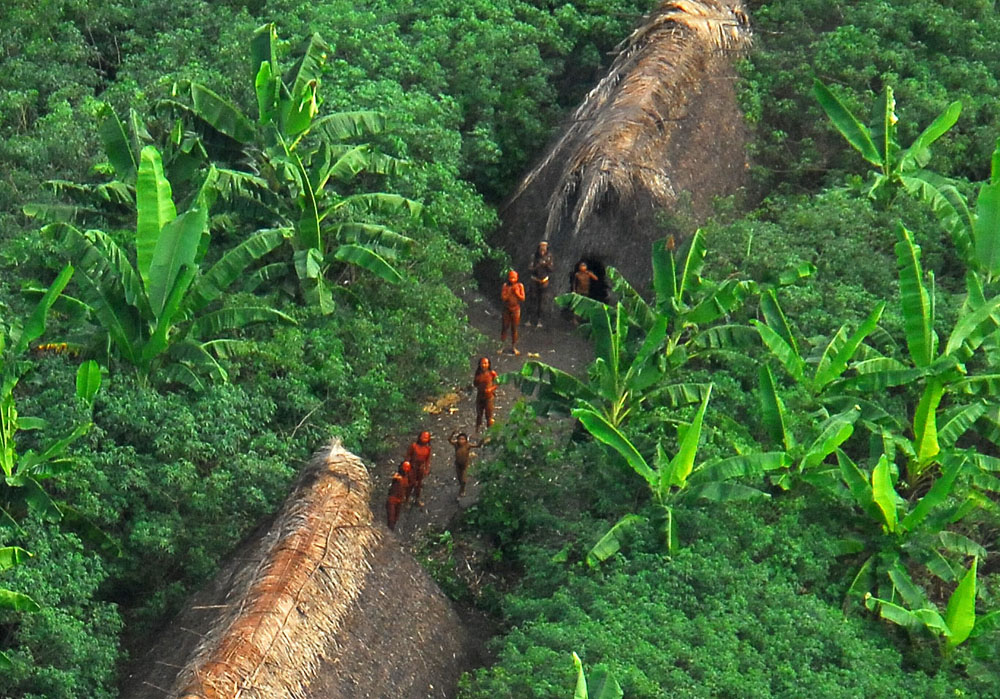“WE’LL ‘DRAG THE CHAIN’ when it stops raining.” The threat made by a logger frightened the riverine people of the Madeira River, who live in communities in the city of Humaitá, in the southern Amazonas, in Brazil. It is precisely there that the “new deforestation frontier” in the Amazon has solidified. The advance of cattle ranching and logging is driving the destruction of the forest—and quickly.
“Dragging the chain” is a reference to a rustic and archaic way of cutting down the forest. In this method, a thick chain is stretched between two tractors that advance through the forest, quickly felling everything in their path. The promise of “dragging the chain” on the lands is scheduled for when the drought hits the region in mid-May.
Historically, the state Amazonas has been distant from the main deforestation fronts in the region. But this reality has changed in the last five years. In 2023, the state had four of the ten Amazonian municipalities with the highest deforestation alerts, according to data from the government’s satellite monitoring.
“Our Brazil nut grove is gone. Wherever we used to walk, there was water and we encountered animals of all kinds. Today, we can’t even find a game to kill, to eat,” complains Valdino Mota, a farmer who lives in the community of Santa Rita, also known as Pirapitinga, on the banks of the Madeira River, one of the localities facing deforestation in the region.
Far from being an isolated fact, deforestation in southern Amazonas impacts hundreds of conservation units and indigenous lands in the area influenced by BR-319, the highway connecting the Amazonian capital Manaus to Porto Velho, in the state of Rondônia. In February alone this year, 700 hectares were deforested in the municipalities surrounding the highway.
Inaugurated in the 1970’s, the highway was never finished, but it is still stimulating profound changes in the region. The promise of paving, for example, has already caused an explosion of illegal branches: in five years, more than 1,500 kilometers of side roads have been built, almost double the total length of the federal highway.
“BR-319 is a vector of deforestation and land speculation. The announcements [of paving] generate this speculation, so there is a rush to occupy areas, as this land is worth more deforested,” says Fernanda Meirelles, executive secretary of the BR-319 Observatory, a network of civil society organizations operating in the highway’s influence area.
One of these roads, known as “Line 17”, runs from the district of Realidade, near Humaitá. The construction of “Line 17” began in 2016 and already stretches for 45 kilometers towards riverside communities on the banks of the Madeira River, such as Santa Rita.
The branch ran over two settlements along the way: the Agroextractivist Settlement Projec Botos and the Sustainable Development Project Realidade. Mota’s family is one of over 400 who own plots in the settlements and make their living from there.
Brazil nut trees were burned, açaí collection areas were destroyed, and pastures took the place of forests. In just two years, between 2021 and 2022, 5,500 hectares were deforested along “Line 17” considering an area of five kilometers around the branch.
“Soy is coming, cattle are coming. They say progress is coming, but what kind of progress is that? It’s violent and very fast. There are already many hungry riverine people,” warns Sister Ivonete Paes, from Área Missionária Ribeirinha, an organization that serves 65 communities in the region.

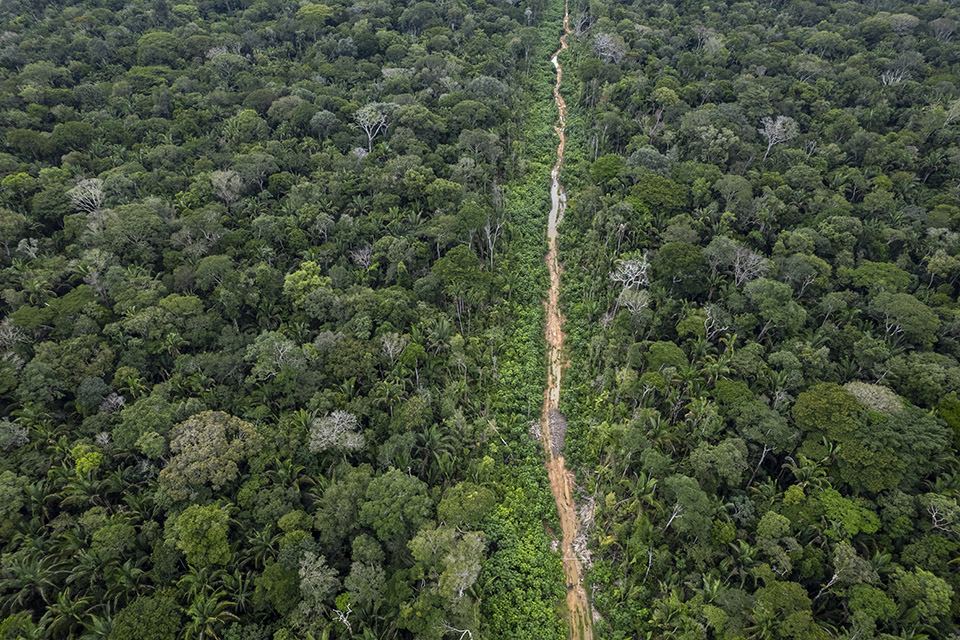
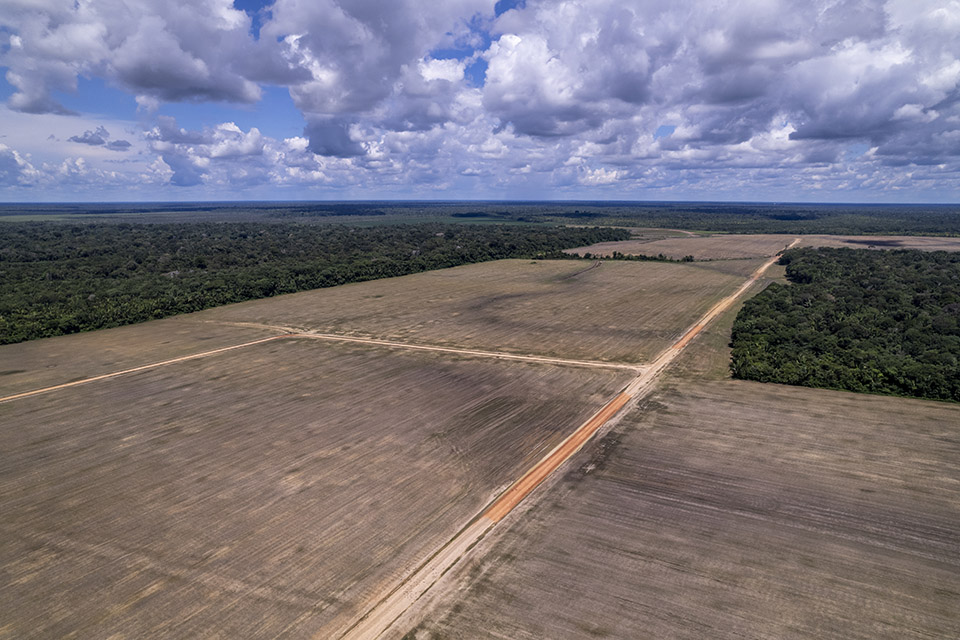

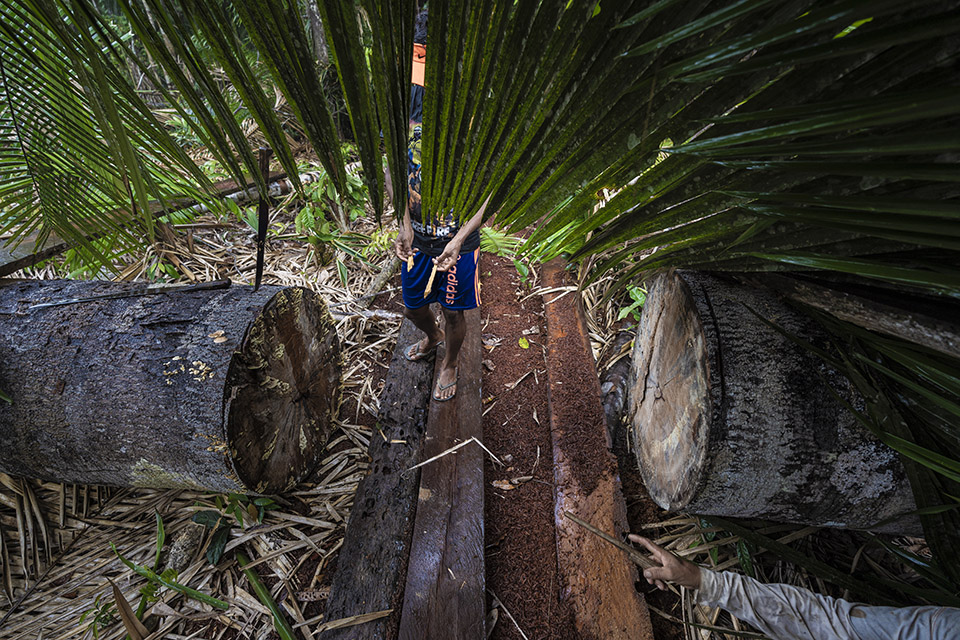
Only 10 cans of açaí
There are lots of Brazil nut, cocoa, peach, rubber, and açaí trees in the community of Santa Rita. Mota’s father planted many of the trees in the region. He is proud to have been “raised in extractivism”. In the past, the harvest was so abundant that the riverine people “couldn’t even carry [the produce].”
For decades, the riverine communities have been developing techniques for planting and managing agricultural and extractive products – such as Brazil nuts and açaí.
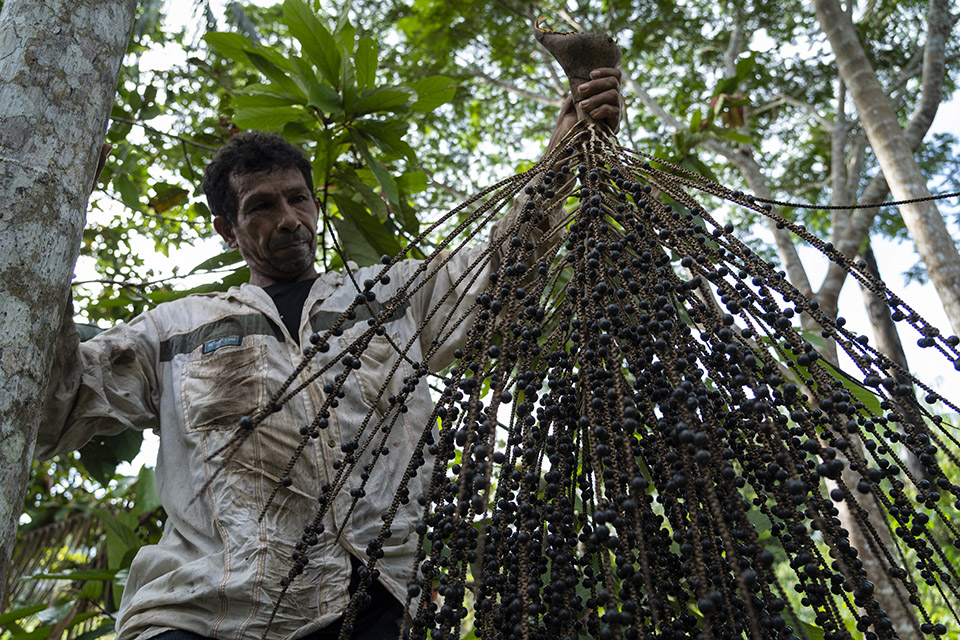
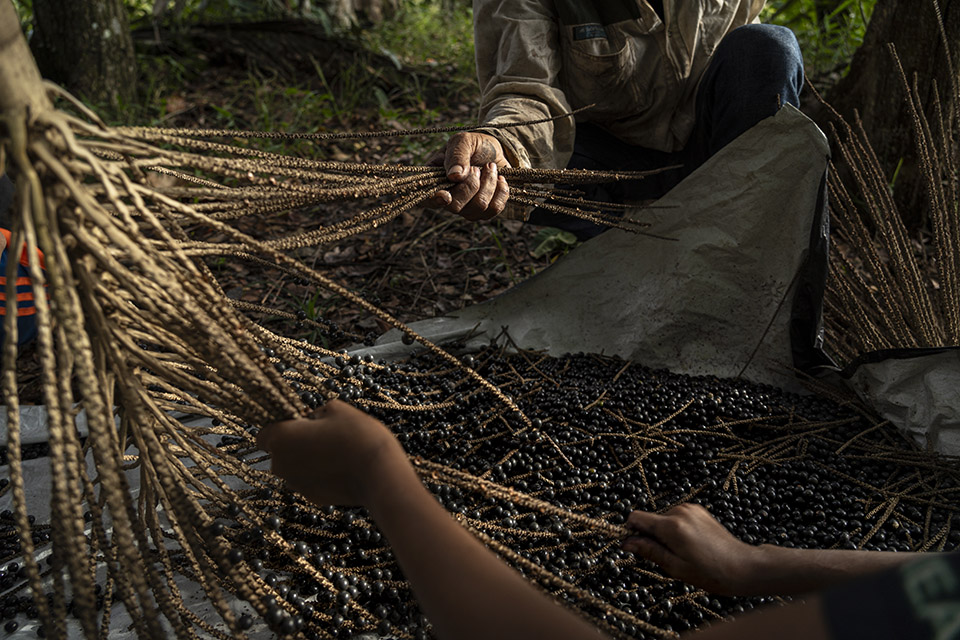
![Toda a família de Valdino participava da coleta do açaí e da castanha: ‘não dava nem conta de carregar [a produção]’, lembra Valdino. (Foto: Fernando Martinho/Repórter Brasil)](https://reporterbrasil.org.br/wp-content/uploads/2024/04/castanha-comunidade-pirapitinga-fernando-martinho.jpg)
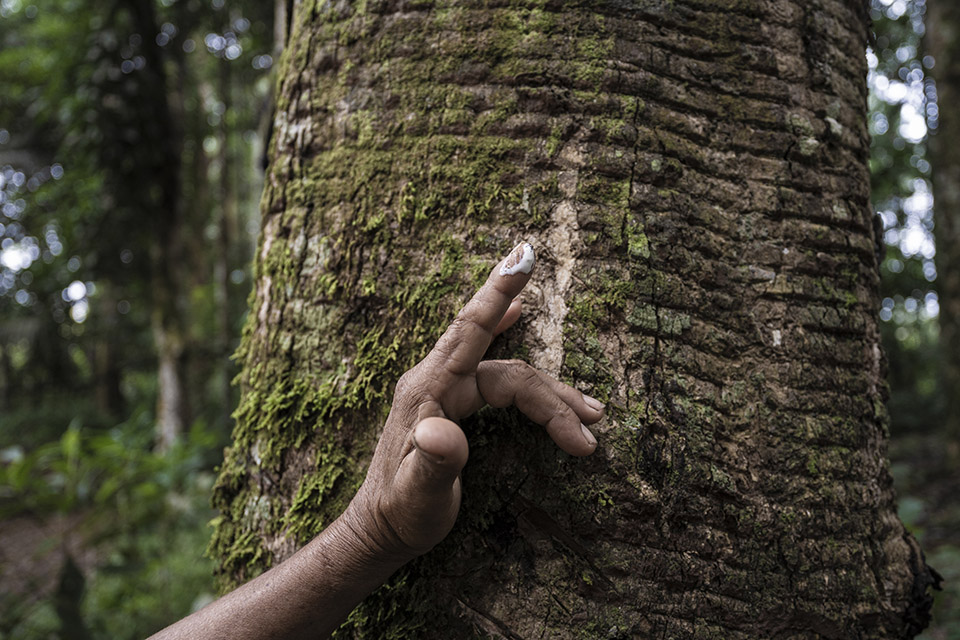
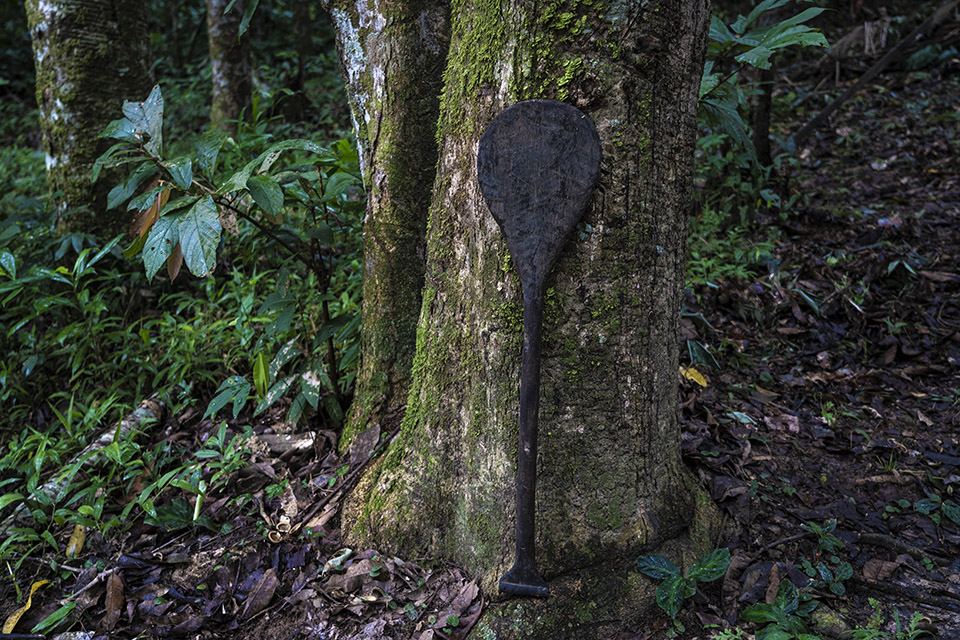
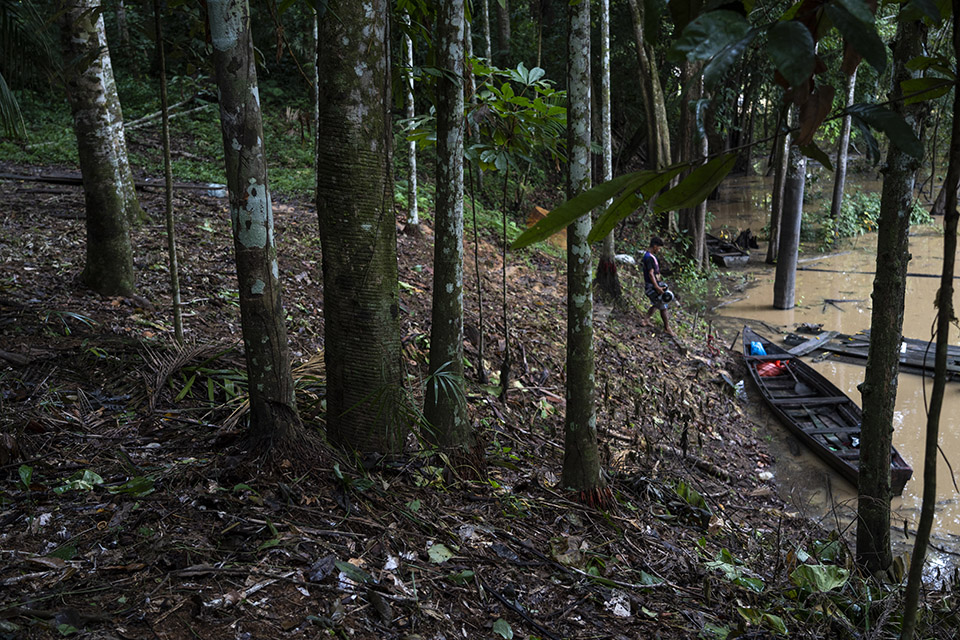
However, the encroachment of deforestation threatens diversity. Droughts and forest fires have depleted fish stocks in the rivers and scared animals away from the forest, as the riverrine people report. The harvest used to yield 40 cans of açaí per person, now, at best, it yields only 10 cans, due to the drastic changes.
“As these deforestation fronts advance, they not only obliterate biodiversity but also erode the traditional ways of life,” alerts Dioneia Ferreira, coordinator of the Transdisciplinary Network of the Amazon and researcher at the Center for Sustainability Studies at the Getulio Vargas Foundation.
With the disappearance of hunting game and fish, the diet of riverine communities has shifted. Canned meat and other processed foods have become commonplace on their tables. “Some communities struggle to meet their protein needs in a meal because the surrounding area is being ravaged,” Ferreira points out.
This process constitutes a “grave violation of human rights,” asserts Camilla Holanda from the Labor Public Prosecutor’s Office of Rondônia. According to the prosecutor, deforestation and cattle ranching “are bulldozing over the traditional ways of life of these populations.”
“They plant grass, but what are we supposed to eat? Nobody eats the ground. We need to cultivate the land to feed ourselves,” complains farmer Marilena Pantoja, whose farm borders a grazing area.
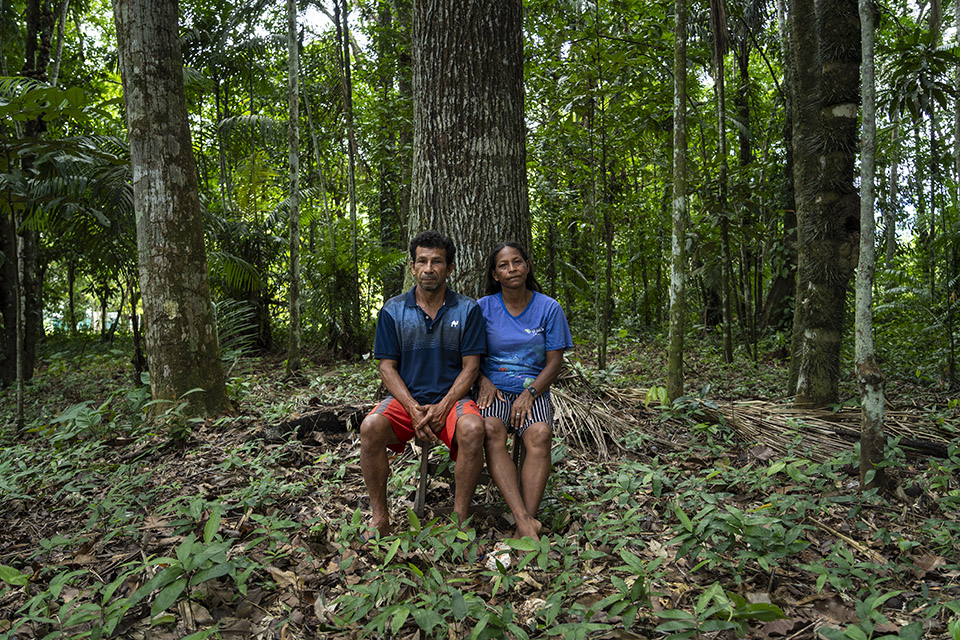
Intimidation and violence
The advance of deforestation is anything but peaceful. There are reports of intimidation and violence, including “warning shots” fired at the walls of a neighboring riverine settler’s property, adjacent to a plot sold for pasture expansion.
Communities are being denied access to areas where they used to gather Brazil nuts and açaí, once communal spaces now sold off to outsiders. “They plaster the area with signs prohibiting entry, and they’re even stationing people hidden in the forest to prevent anyone from coming near. Once you step in, there’s a risk you may never return,” shared one farmer anonymously.
Violence in rural areas has surged in the past year, with over two thousand conflicts documented in the “2023 Land Conflicts” report by the Pastoral Land Commission. In the region known as “Amacro”, which is made up of the states of Amazonas, Acre, and Rondônia, eight people were murdered. The figure remained unchanged from 2022, bucking the national trend of a 34% reduction in such incidents.
Amazonas has seen a increase in conflicts, soaring from an average of 25 between 2010 and 2016 to 75.6 between 2017 and 2023—a 200% surge. According to the Pastoral Land Commission, most of these disputes occur in the southern and central regions of Amazonas, areas witnessing rapid expansion of agribusiness interests.
“They’re selling [plots] and they’re slowly killing each other. Today someone is alive, tomorrow he can be dead. Because of land,” told another river dweller, who also asked not to be identified.
"If we don't stop them, the slavery will return"
Pressured by the loss of territory and without work options, some riverine people are involved in deforesting areas to develop pastures. Most of the people who do the work come from outside the communities – from Humaitá or even from other states, such as Amazonas and Mato Grosso.
Repórter Brasil spoke with two people who worked in forest clearing, and both reported terrible living conditions, food, and safety during the endeavor.
The worker Pedro* tells that he woke up every day around 6 a.m. to go to the forest management area and only returned to the campsite around 5:30 p.m. His diet mainly consisted of flour, bologna, and dried meat that he prepared himself upon returning from work.
Working to clear a forest is dangerous. There have been reports of machete accidents and trees falling on the workers. “The risk of dying is high,” Pedro said. It is exacerbated by the lack of access to any healthcare: “If happened an accident where we were, and we had to carry someone who can’t walk, I don’t think he’d survive,” he said.
The only safety equipment Pedro had was “a boot he had brought from home.”
João*, another worker interviewed, also received no support. “I would just wear regular clothes, long sleeves, long pants, and boots,” he said.
“I know of people who had serious accidents. Sometimes they get hit [by a machete], sometimes it’s a snakebite. Everything happens because you’re walking in the rough forest,” João said.
João and Pedro spent weeks in a makeshift tent camp at different times. The precarious structure made it difficult to rest at night. “When it rained, nobody slept, we had to wait it out. When it rained with wind, it would come in under the tarp and soak everything,” João said.

In the last 20 years, 477 workers in conditions analogous to slavery have been rescued in Amazonas—mostly in livestock or deforestation activities. The data comes from the Ministry of Labor and Employment systematized by Repórter Brasil and the Pastoral Land Commission.
“The Amacro region [Amazonas, Acre, and Rondônia] has many sawmills, but there is no discussion about the social aspect involved, nor about the implementation of public policies to prevent slave labor and workplace accidents,” explained prosecutor Camilla Holanda, who is also the regional coordinator of the National Coordination for the Eradication of Slave Labor.
Cases of slave labor in Amazonas represent just over 1.3% of the total in Brazil. Far from indicating good working conditions in the state, the statistic hides low inspection rates, according to Holanda. “Getting the Brazilian state to reach these areas involves structuring the inspection mechanisms in the region,” said the prosecutor.
Under the radar, deforestation encroaches upon the riverine communities of the Madeira River. Without the forest, farms, açaí, or Brazil nuts, the communities fear for the future.
“If we want to survive, we’ll have to work for them [deforesters], looking after their farm,” said Pedro. The worker who had his house hit by gunfire is more categorical: “If we don’t stop them, the slavery will return”.
*Fictitious names to preserve the workers’ identities
Leia também
